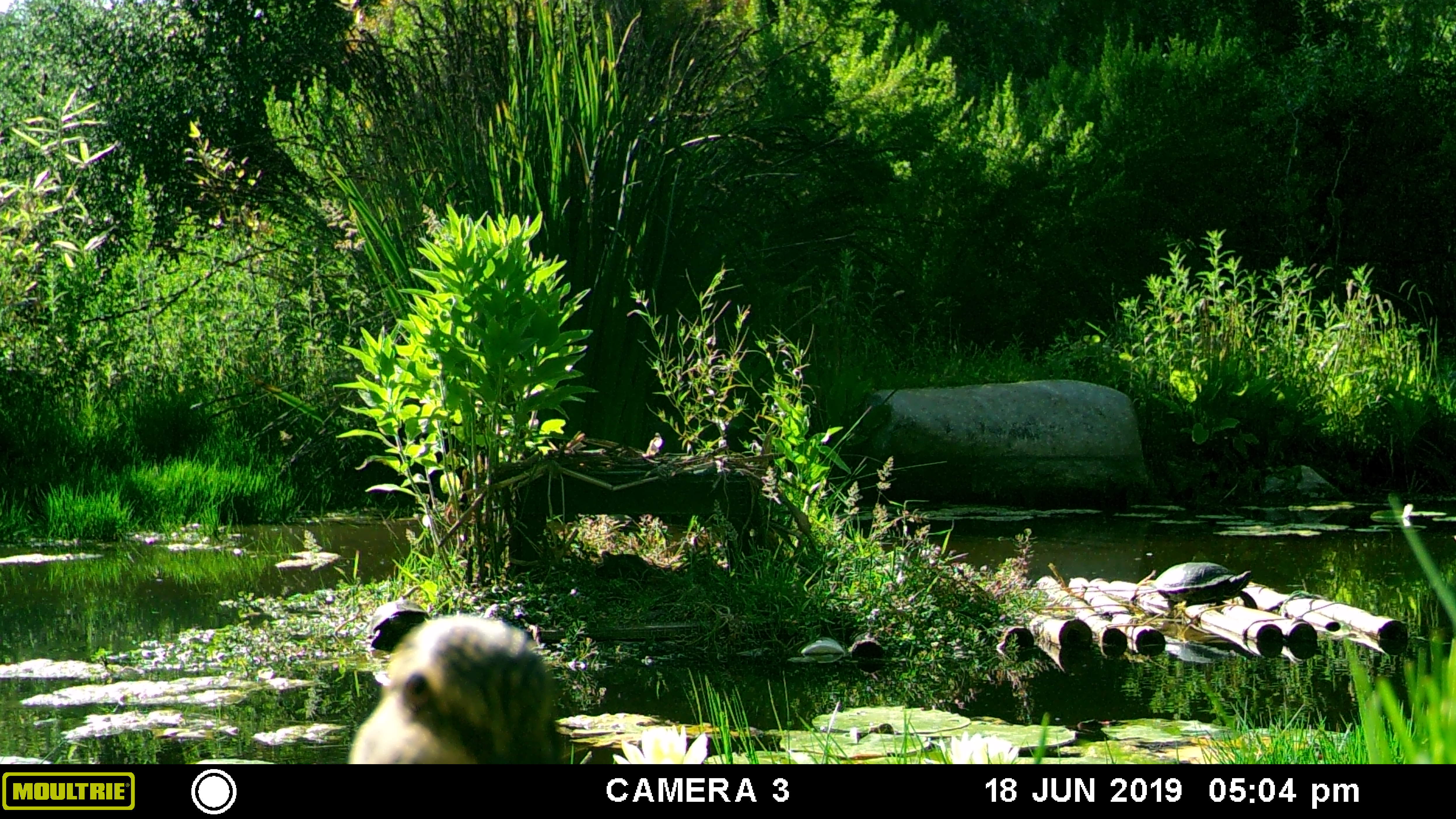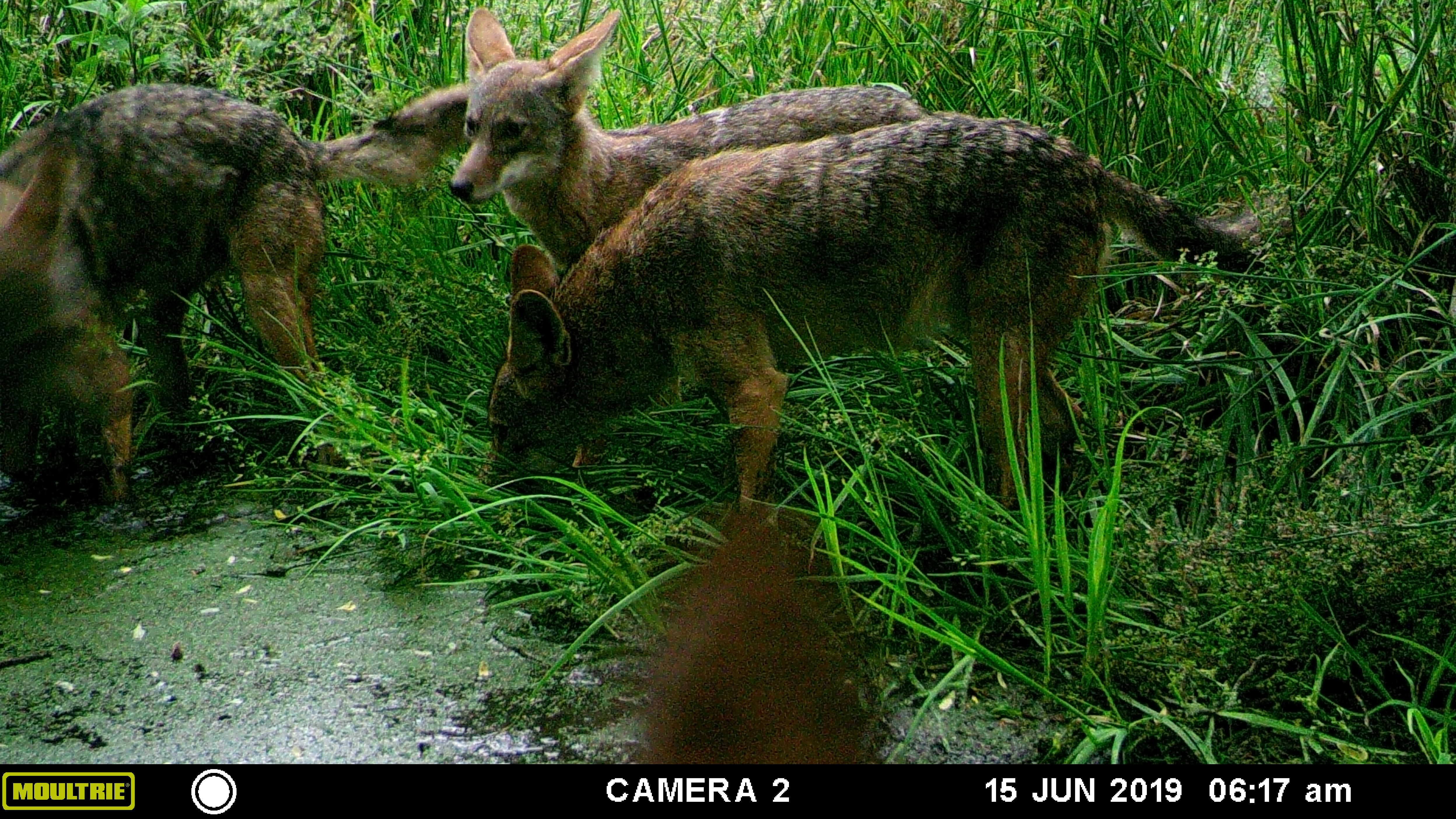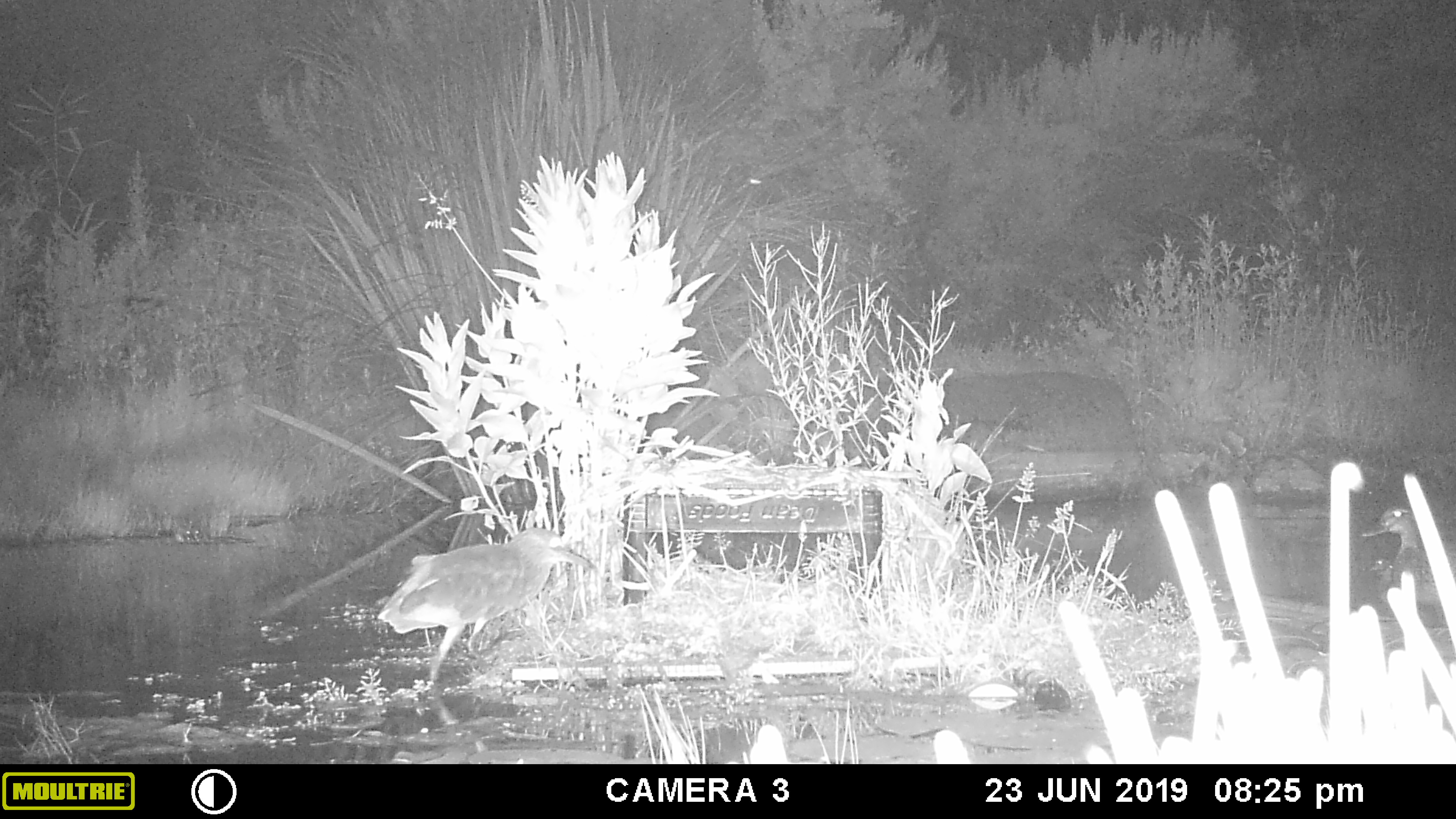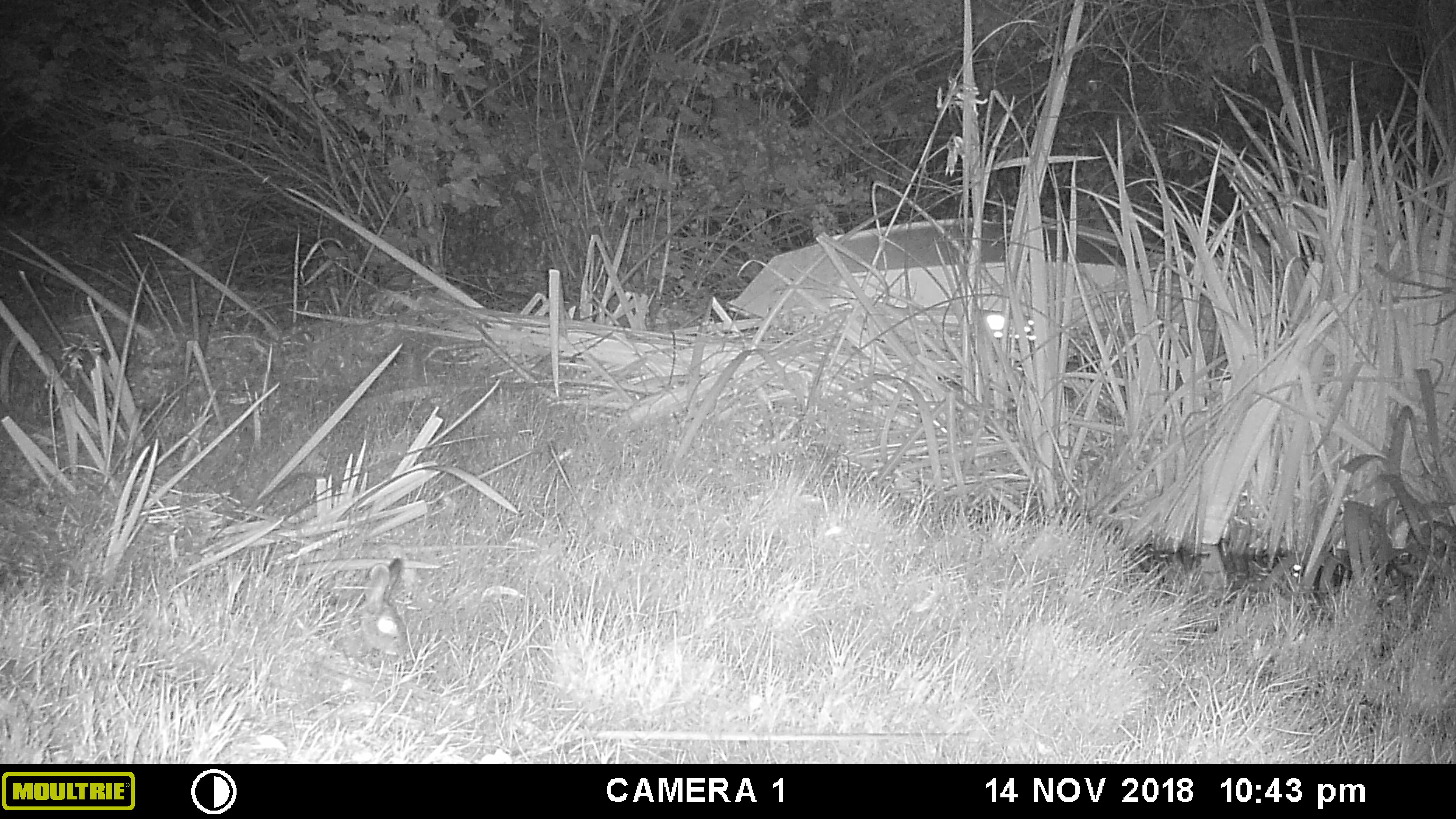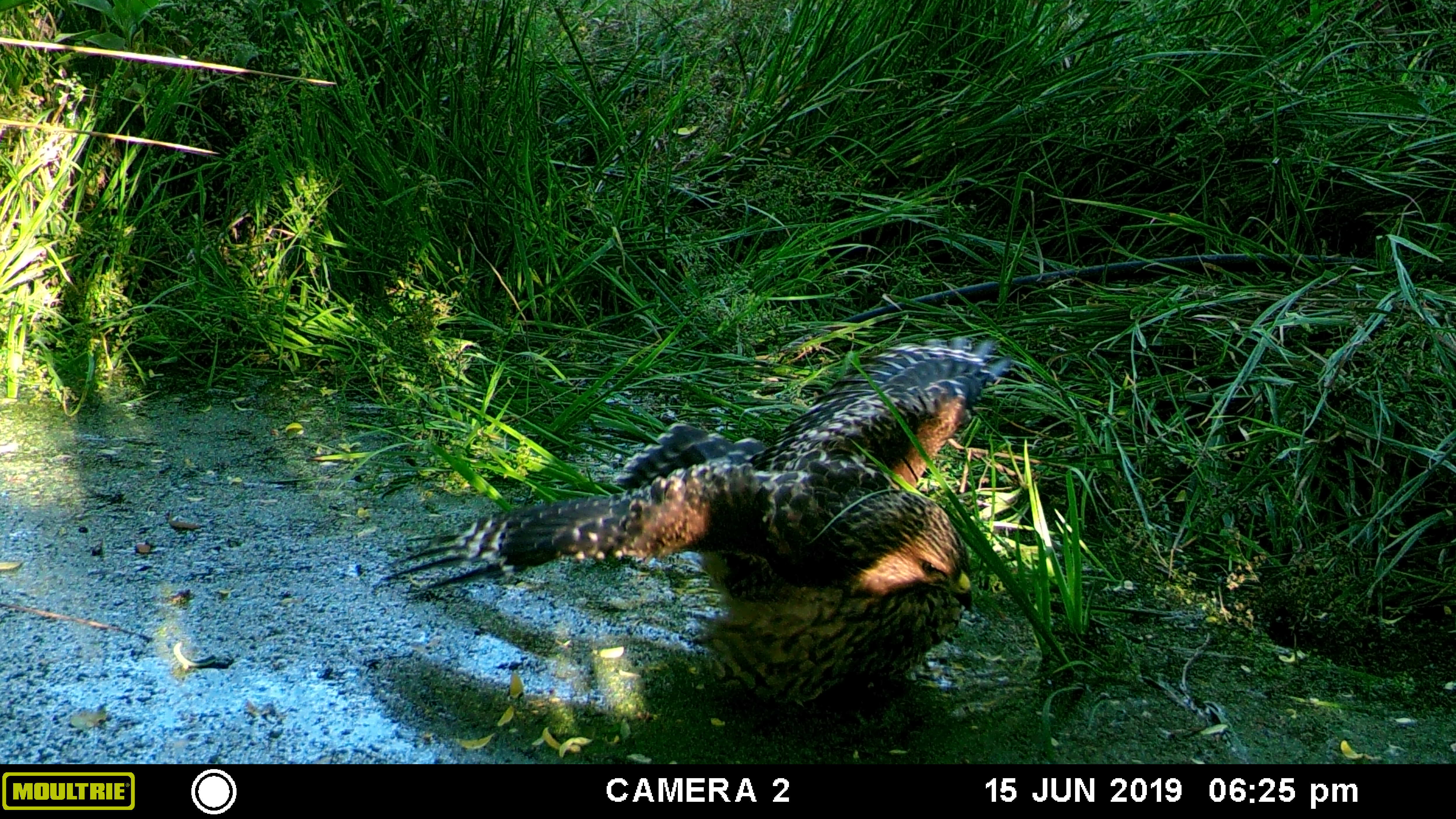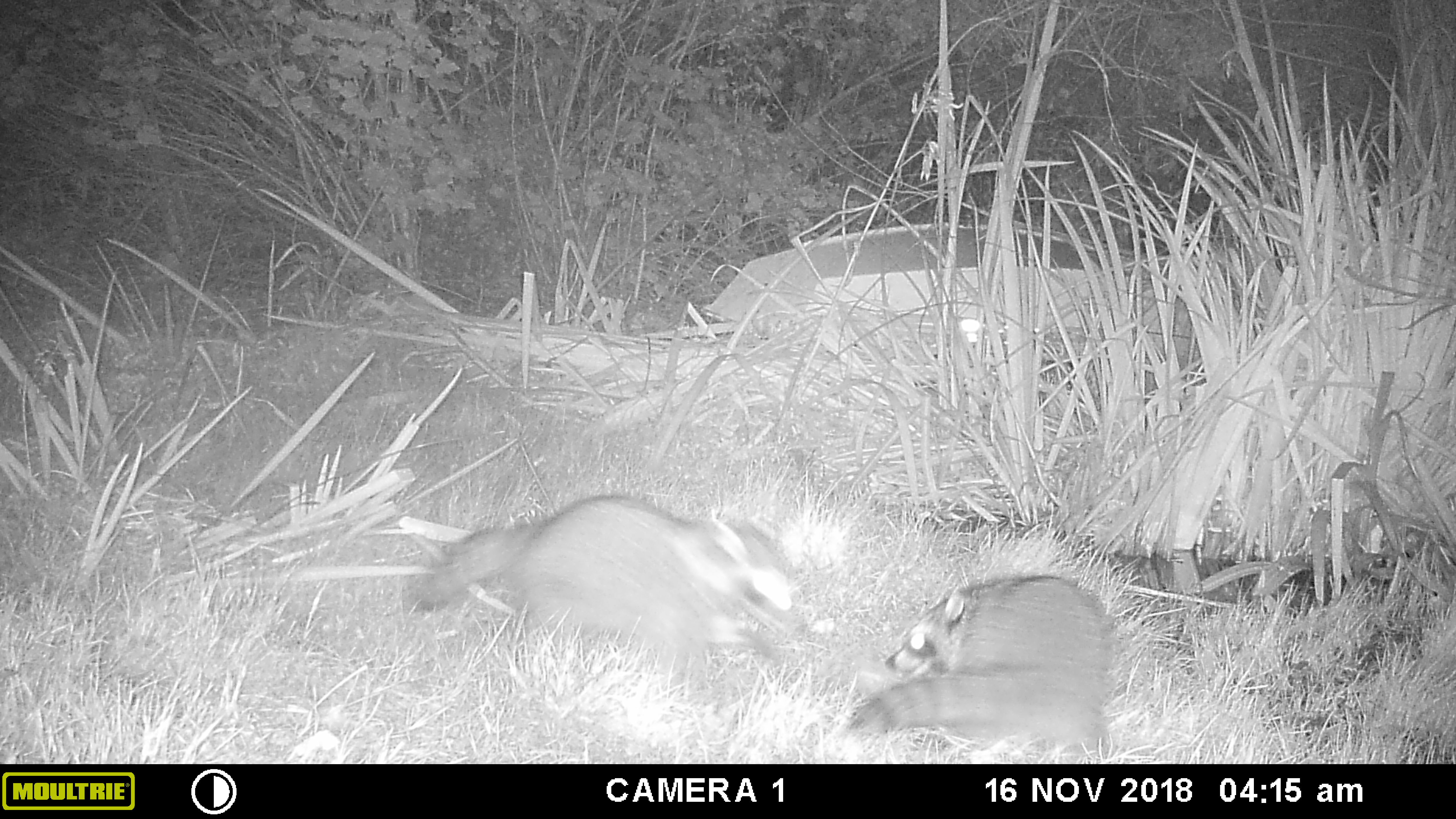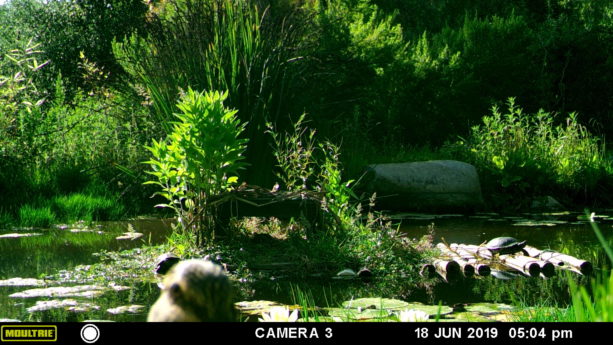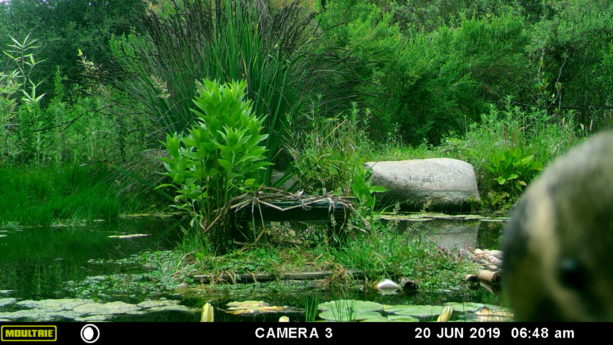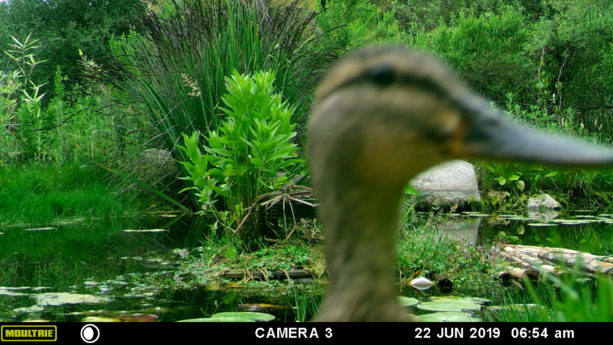Permaculture and Edible Forest Gardening Adventures
I am turning my acre + watershed filled with junk palm trees into an edible forest garden, using permaculture and recycled materials. The journey begins Feb. 1, 2011.
-
The Coon Saga: The Luck of the Draw
 POND FROLICS
POND FROLICS
Long before the ponds were put in, the property was still home to a gregarious population of raccoons, due to the small seasonal stream that cuts the western end of our land. Most particularly, a mother coon would always set up stakes in our area and rear her brood to wash their scavenged tidbits in our birdbath and roll our firewood across the porch in search of mice.

Baby coons are a lot of trouble. Mama always has a lot on her scary, leathery little hands. Usually two to three kits at a time, brimming with her own casual greed and entitled curiosity but without — yet — her seasoned edge of belligerent caution, they tumble and squabble, wander and sneak and thieve their way through summer’s kithood until they disperse to independent mischiefs and leave their mother with a brief respite before she’s thrust back into the whole ordeal again (and that’s another story right there…).

KIT: I wonder where Mama is…
MAMA, to camera: Srsly. I said “Stay on the fence,” and this is what they do to me. These kids, you know? BTW, I will bite your face off of your skull if you come any closer.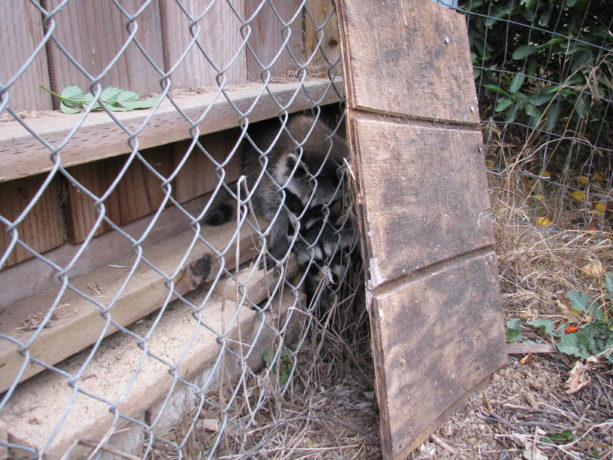
(This chain link is directly below the kit on the wood fence in the previous picture.) This year, the local mama coon has been blessed with quadruplets.

Notice Mama top right. Needless to say, the cameras have been providing plenty of schadenfreude over the last few months.

Oh look, a moment by herself to have a nice little hunt for her own supper. Feels like there’s something there…. 
Oooo! Get inta this…. 
…and baby wants some! 
Oh well. -
The Battle of the Bulge
 POND FROLICS
POND FROLICS

In the still of the night….
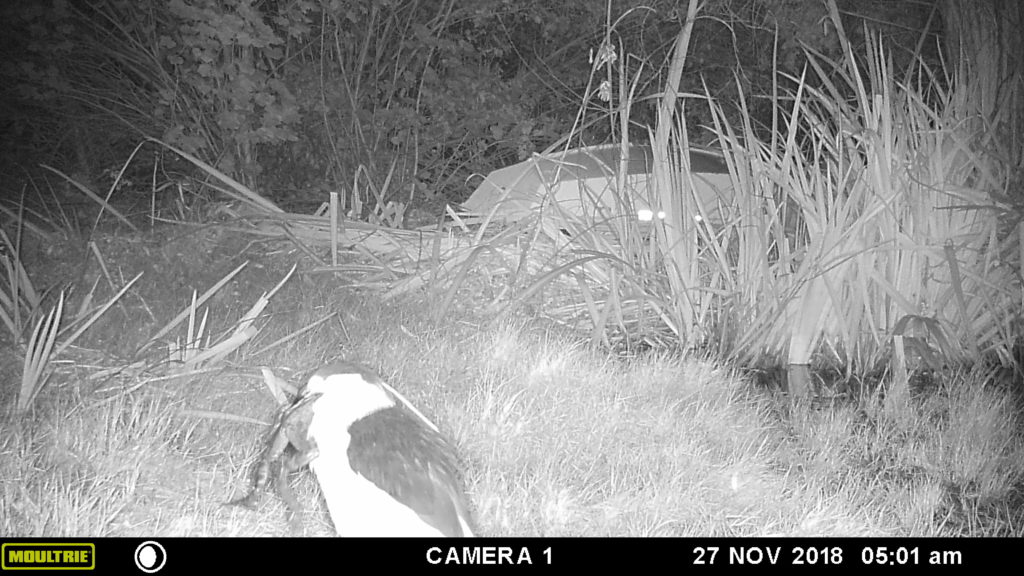
“AHAAAAAH! ‘INGO! Om wi’ EE, ithter ‘ummy!” 
“…Iddle ard oo ‘thallow…” 
“Utht ‘otta adust.” 
“Abee oer ere….” [Five minutes later…]

“Oou know, imma juuuust –“ 

“You know, I really feel like worms, anyway. Yeah. Alright. Let’s go get some worms! Yeah.” -
Owl Be There
 POND FROLICS
POND FROLICS
That nocturnal birds eat at night is a pretty straightforward piece of knowledge — awake at night, ergo eating at night.

It’s also pretty clear to anyone who finds a large dropping on their car in the morning that wasn’t there the evening before that other functions of life have to happen in the hours in which we sleep or stumble into things as well.

It’s funny how surprising it was to me to be confronted with the fact that owls — as of course they must do — also bathe at night.



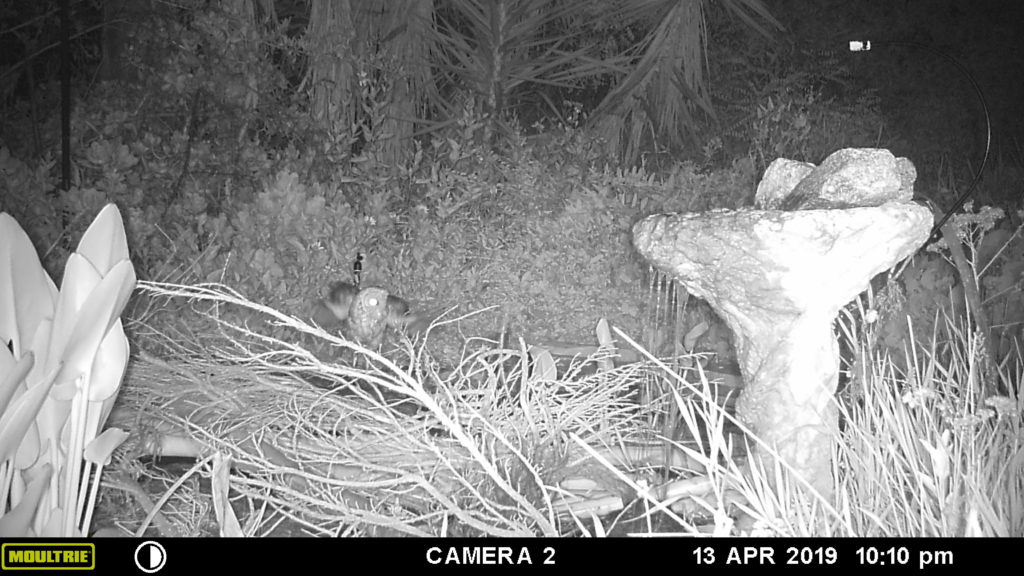
Need to install an owl-dryer out there!
- Animals, Bees, Integrated Pest Management, Natives, Other Insects, Permaculture and Edible Forest Gardening Adventures, Predators, Quail, Reptiles and Amphibians
Native Insects and IPM

A tiny wasp. Honeybees are not native to North America; however, we have an amazing number of underappreciated, ignored or sprayed native insects. Here in Southern California where the lack of rainfall has created a landscape called the Elfin Forest, the canopy is short, the animals are small and many of the insects are very tiny. If you take a careful look at clusters of small blossoms you will see tremendous air traffic. Besides the honeybees, there are butterflies, moths, and bees, wasps and flies that range in size from the large black carpenter bees and shiny green June bugs, to predatory wasps no larger than a speck of dirt on the back of your hand. These are your companions. They are the unsung workers responsible for a large percentage of pollination and invasive insect control. They in turn are food for the other policing creatures of your garden, the small birds, lizards, frogs and toads. And newts, salamanders, dragonflies and damselflies… I don’t want to leave any of these marvelous workers out.
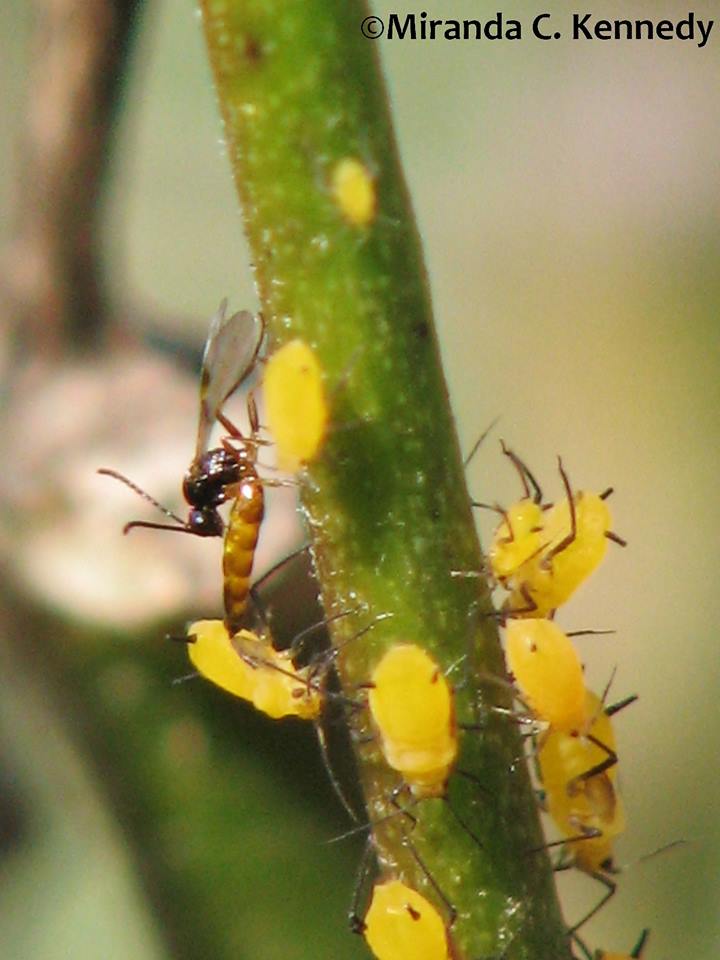
A native predatory wasp laying eggs in oleander aphids on milkweed. These tiny insects need small clusters of flowers to feed upon, and planting to cater to the native insect population wherever you live is vitally important. It is just as important as building good microbial communities in the soil.
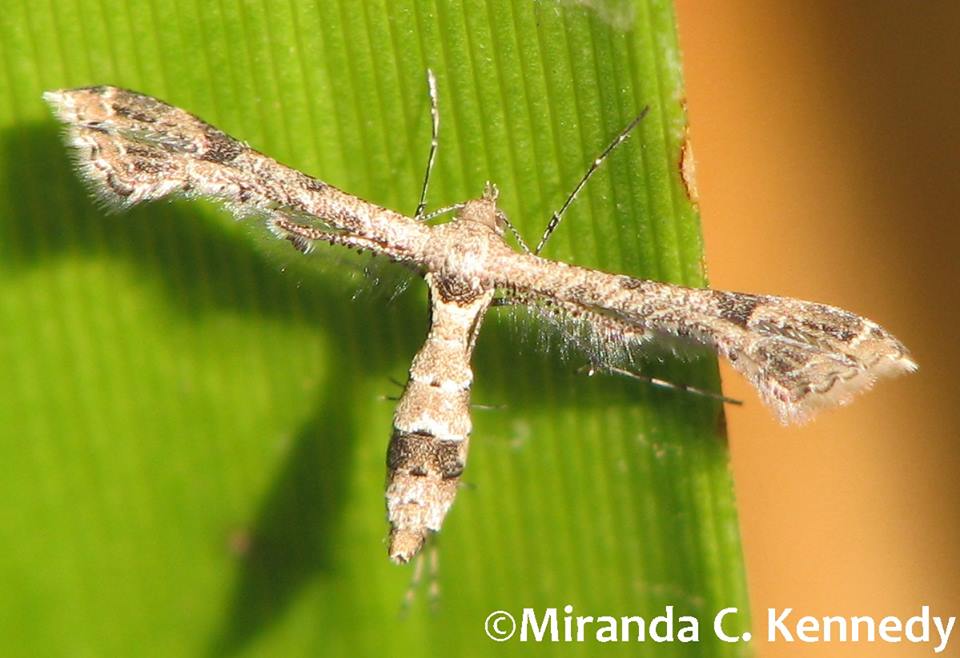
A plume moth. Here is a video – a shaky one taken with my phone as my camera is in for repair – of the tremendous activity around our blooming apple mint. The mint is next to our vegetable garden, and pollination is never a problem. Throughout our property we have blooming plants, mostly natives especially of course in our permaculture Zone 5, and they are feeding thousands of native insects – and honeybees – as well.
Please be patient with the video (it picks up my pulse!) and enjoy our August garden.
-
The Púkas of Caerbannog
 POND FROLICS
POND FROLICS
Finch Frolic is home to many Desert Cottontails.

Dah-DUM. Dah-DUM. Dah-DUM, dah-DUM, DAH-DUM –! More all the time, in fact.

“Whoa! Do you see what I see?” “Yeah, yeah — when did that rabbit get there?” Or at least very solid population replacement.
We see them all the time because they are pretty comfy here and used to us, just scooting around nibbling grasses and fighting the ducks (I gotta see if I have photos of that to share — hilarious bunny sass…).
The funny thing is how infrequently they appear on the wildlife cameras, and when they do, they’re invariably being rather sneaky.
“Oops, still in shot, sorry.” 


Sometimes, it can start to feel a little spooky….
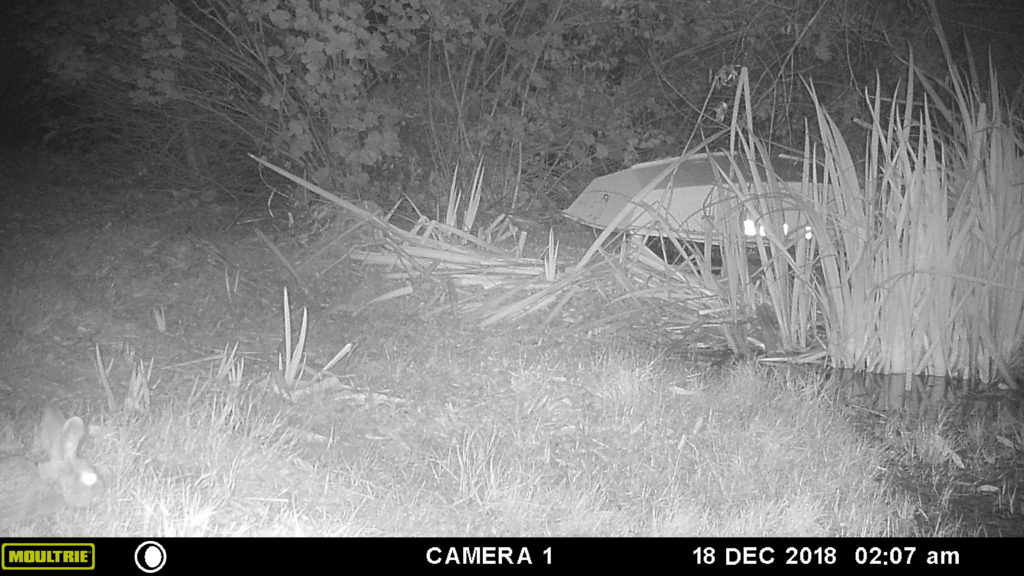
(Nasty, big, pointy teeth.) 
— Run awaaaay!
-
Coon Tales: The Beginning
 POND FROLICS
POND FROLICS
When we first put out our wildlife camera over the big pond’s north bog, we quickly found that aside from the oppressive scourge of the querulous ducks, raccoons are our most frequent visitors.

“Ooo — I wonder if that little red light is edible?” 
“I can just sneak right up on it….” 
“Hmm — nothing inside this shell to eat. A pointless object.” The story they present is also generally a much more compelling one than the ducks’ — they both have intrigue, romance, action and comedy, but when you’ve watched ducks go back and forth and back and forth and back and forth in petty squabbles for the zillionth time, you come to respect the way the coons economize their time.

INTRIGUE 
COMEDY 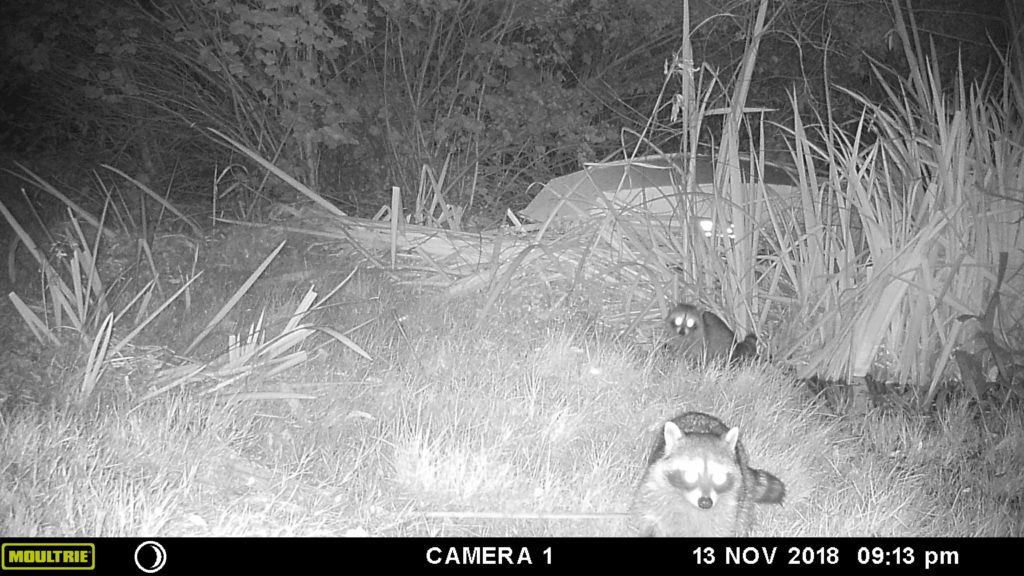
ROMANCE 
ACTION The ducks take the whole day to execute their drama, but the raccoons squeeze it all into night visits lasting only a few minutes, perhaps a quarter of an hour.
Or perhaps only the time it takes to capture a single, perfect picture.
-
Getting Your Feet Wet
 POND FROLICS
POND FROLICS

“Oooo that is definitely squlechier than I expected–!” Either this juvie Red-shouldered Hawk (Buteo lineatus) thinks she just caught something or she’s just realizing bathwater with duckweed might not be the best choice….



Subduing an unfortunate young bullfrog? Carefully scraping off tiny, free-floating aquatic plants? Blocking out a new rhythmic gymnastics routine? We’ll never know.
-
From Heron Out
 POND FROLICS
POND FROLICS
Lessee, what can I tell you about the Black-crowned Night-Heron (Nycticorax nycticorax)….
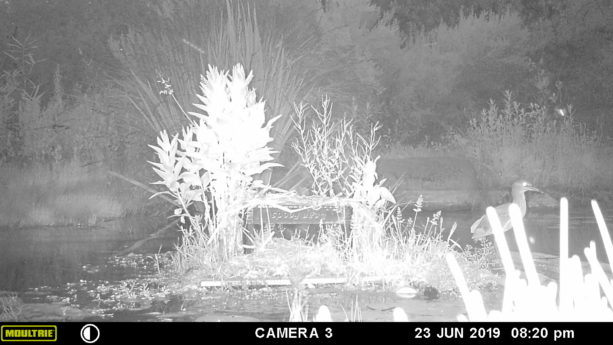
“WHOA, what was that back there? Gotta check that out….” There’re small herons. They have blackish feathers on top of their heads. I guess you could call it a cap. A blackish cap.

“They were fast – as – light – niii-ing–!” They’re the most widespread species of heron in the world, apparently. Noisy, social, not too fussy.
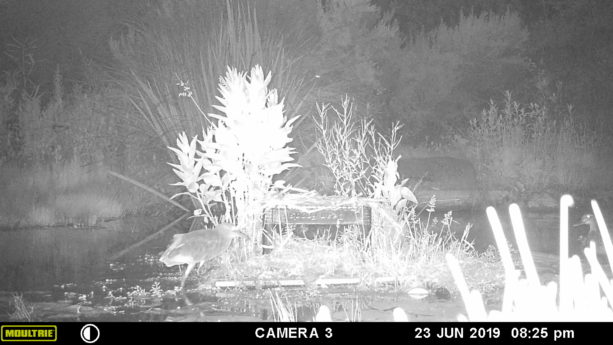
“Hey! What’re you lookin’ at, lady?” Oh, and this is surprising: they do most of their hunting and such at night or in the dusk: evening and early morning. Herons of dimness. Darkling herons. Gloaming. Blackish-capped. Herons.
…Yep. -
New Wildlife Camera Angle
-
Puppy Time
 POND FROLICS
POND FROLICS

Four silly yappi-yotes! We viewed the latest batch of wildlife camera photos the other day and were treated to a stop-motion movie of young coyote antics in the back of the little pond. Every year, we’ve only had the evidence of crepuscular play, so it’s nice to finally get an idea of what shenanigans resulted in the traces left for us (I refer you to the episode of the Great Snake Vanishment). Critically, we gleaned important clues in the mystery of how the hose that tops up the ponds from the well got kinked; 12 hours we put the station on, and the pond level got lower!
Puppies, y’know?


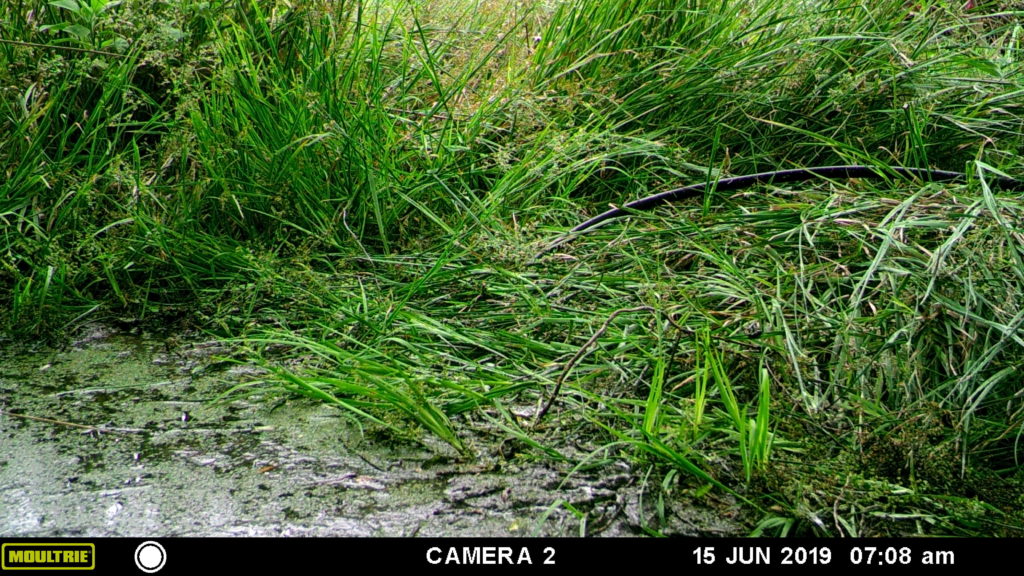

* Yeah. We do good work. *

